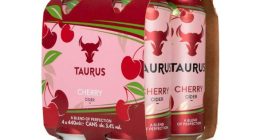Opinions expressed by Entrepreneur contributors are their own.
Over the last decade, we’ve seen drastic changes in consumers’ eating behaviors, but nothing in history has fast-tracked consumer trends like the events of the past year. Consumers shifted from grabbing comfort food to demanding healthier options, clean ingredients, premium quality, and new flavors. In turn, we have seen consumer tastes move from big name brands to new better-for-you ones. At our clean-label brand, an unprecedented 30% of our growth over the last year has come from new consumers.

Shutterstock
According to McKinsey’s 2020 report, over 60% of growth over the last decade in the $800 billion food and beverage industry has come from small brands. This is a profound change from a decade ago when large consumer packaged goods (CPGs) controlled and dominated shelf space and sales. The driving force? A younger generation that a decade ago wasn’t a priority for major corporations.
Today, Millennials have the most buying power of any generation and discerning demands that are markedly different from Baby Boomers. Unlike their parents, Millennials are making conscious brand choices based on values rather than cost. Ford’s 2020 Trends Report even revealed that 42% of U.S. consumers had boycotted a brand because of the brand’s values.
When that level of awareness and dedication occurs, big brands can’t be solely focused on the bottom line. Instead, they need to concentrate on three key pillars: transparency, authenticity, and nimble, disruptive innovation.
What Am I Eating? Millennials and Modern Consumers Want Transparency
Millennial consumers are attentive and well informed. They are aware of (and concerned about) the effect that ingredients have on their bodies. If they feel misled on nutritional facts, this influential group has no problem splashing it across the internet.
This shift may soon impact federal law. Incredibly, food labeling requirements in the United States have not been changed since 1990, and some rules date back to 1938. Lawmakers are seeking to change this with the Food Labeling Modernization Act of 2021, which was recently introduced to the House and Senate to make food packaging less opaque and more consumer-friendly. Lawmakers recognize that consumers are confused and have a right to make “more informed purchasing decisions.”
Over a decade ago, we at Saffron Road made it our mission to uplift food standards in the meals sector to an unmatched level of authenticity. We sought transparency by being the country’s first non-GMO Project Verified and humanely-raised frozen entrée, which modern consumers have fully embraced, validating our original mission of ethical consumerism.
Simply put, major CPGs need to incorporate transparency into their labeling, marketing, and messaging before it’s too late. It’s not enough to say a product is healthy or “natural.” Explaining precisely what’s in the product removes the guesswork, increases trust, and may soon be legally required.
Strive for Cultural Integrity and Authenticity in Global Cuisines
The Millennials forcing the change are adventurous, will travel for food (culinary tourism is expected to have a market value of nearly $1.8 trillion by 2027), and are seeking culturally authentic experiences. That’s on top of the fact that America is a very ethnically diverse nation with an estimated 40% of the population identifying as non-white.
A recent August 2021 IRI report cited that today’s modern consumers are not only adventurous in their meal choices, seeking out Non-European ethnic foods, but that they are also younger and more diverse than previous generations of consumers. Now realize that 90% of the largest brands in IRI data base were started between 1850-1970. During that whole period whites comprised more than 85% of the population — closer to 90% for most of it. And based on the 2020 USA Census just out, today white are at 58% down from 64% a decade ago. So, it’s not surprising that consumers demand ethnic authenticity down to the ingredients in the foods they eat at home.
Ethnically “inspired” foods won’t cut it anymore; they must be traditionally authentic and have cultural integrity These delineations will become more critical as time goes on. Sure, you can put out a pretty package and talk about how it’s a great Indian entree. But if the actual recipe and ingredients aren’t indigenous to that region, the branding will appear deceptive—and may even border on cultural appropriation. Millennials want to know that their purchases are supporting the local economies from which the brand is derived. It’s vital to be keenly regionally specific and genuinely ethnic with a flare of epicurean culinary excellence. If it’s an Indian dish with rice, make sure the rice is Basmati sourced from India. If there’s a Mexican product, use cheese from Oaxaca, not Wisconsin.
More prominent companies have traditionally leaned on the marketing message instead of understanding what foods come from those various regions. However, the thought that cheaper ingredients could drive more profits will not pan out for much longer. Recent consumer insights from IRI have demonstrated that modern consumers are willing to pay more for authenticity, particularly when it comes to regional specificity in ethnic products.
Become A Nimble and Disruptive Innovator
To gain market share in the food and beverage industry, every big or small company needs to meet consumer interests quickly. It is vital to be agile, adapt swiftly to change, and bring disruptive innovation to the marketplace.
Smaller brands have the upper hand in their ability to pivot quickly based on new data, anticipated trends, and their ability to engage with the modern consumer. The margins for innovative products may initially be lower, but the investment may lead to more market share, higher repeat purchases, deeper brand loyalty, and sustained growth. Focusing on the dynamic needs and discerning demands of these modern consumers and then innovating awesome products that directly address those needs is a winning strategy.
Although implementing any of these three key pillars is a move in the right direction, they’re designed to work together and synergistically build upon each other. For example, brands can’t simply create new products to suit a trend if they aren’t also made authentically and with full transparency to the consumer. Sooner (not later), the consumer will catch on.
Of course, this all requires a passionate team focused on BFY products with stellar culinary excellence. These pillars are proven to increase market share, and consumers are willing to pay more for it. Boston Consulting Group and IRI put out a study calling this phenomenon the “Premium Opportunity.”
Modern consumers, even lower-income households, are paying up a more significant percentage for premium brands. They are willing to spend more disposable income on premium, healthier products that live up to their values. It’s a win-win when CPG brands mindfully commit to making healthier, cleaner, and traditionally authentic products. Today’s demanding modern consumers will then feel a greater affinity towards such authentic brands, which can lead to gains in sales, brand loyalty, and more profitability on the shelf.
This article is from Entrepreneur.com







